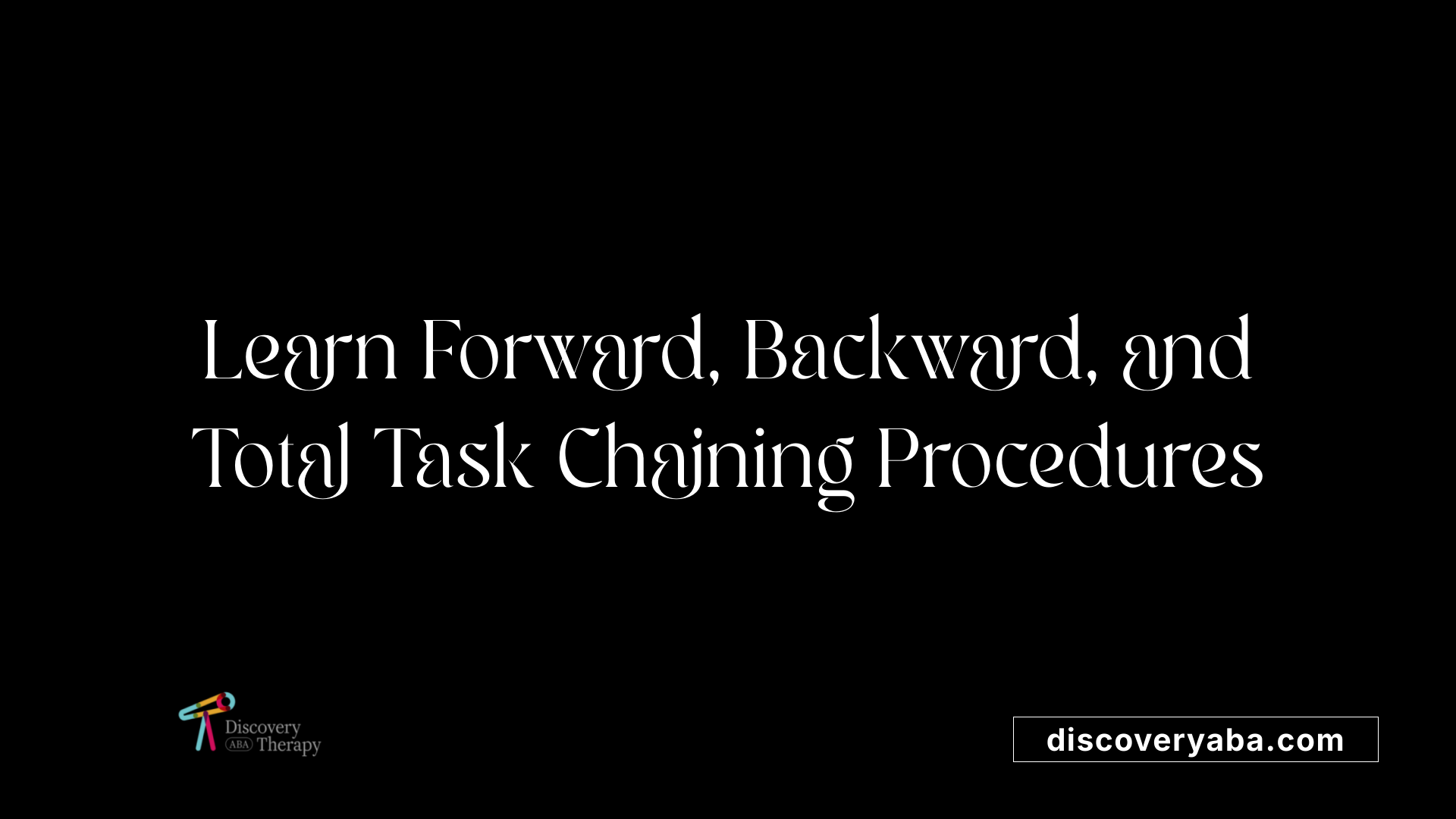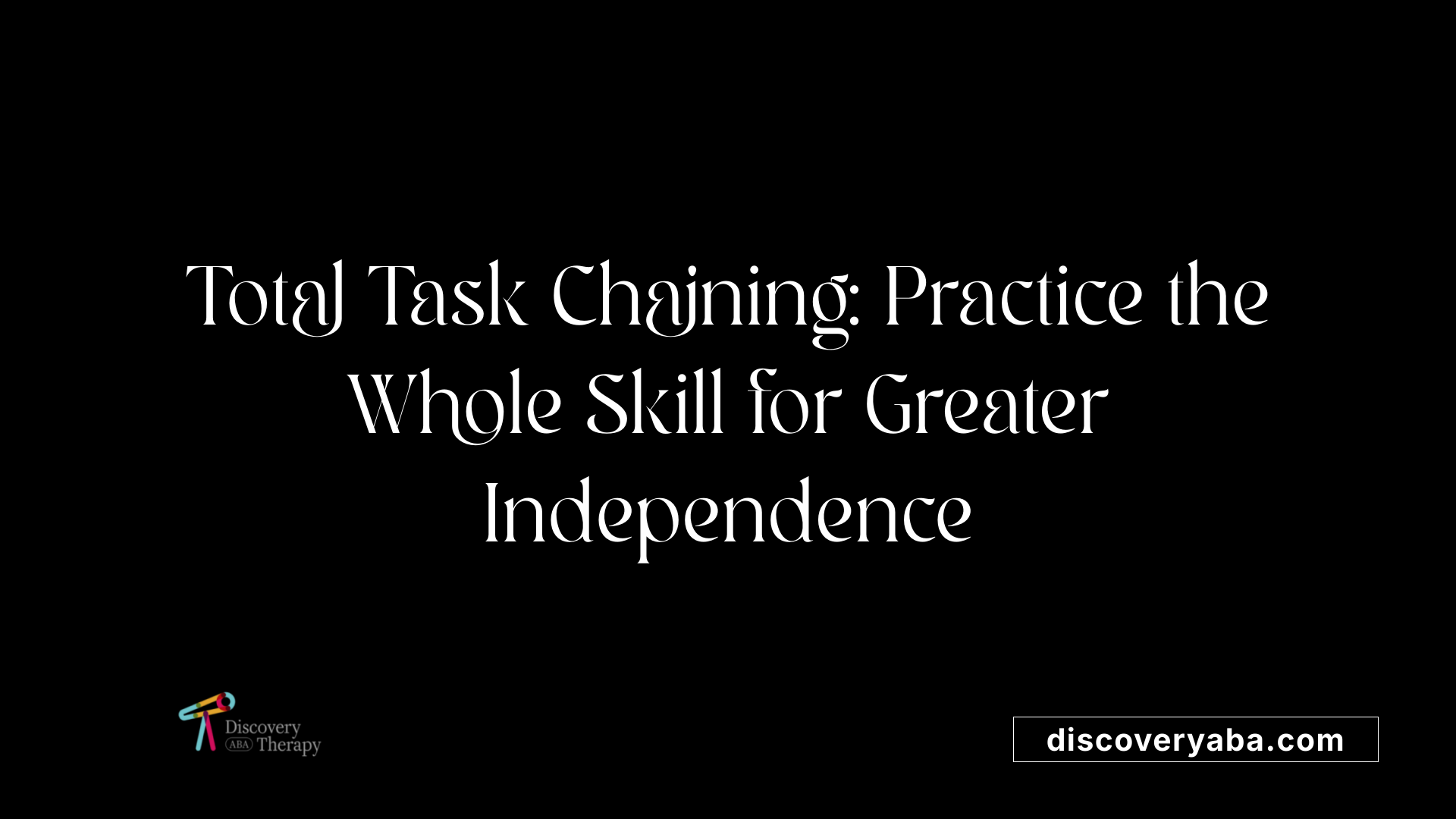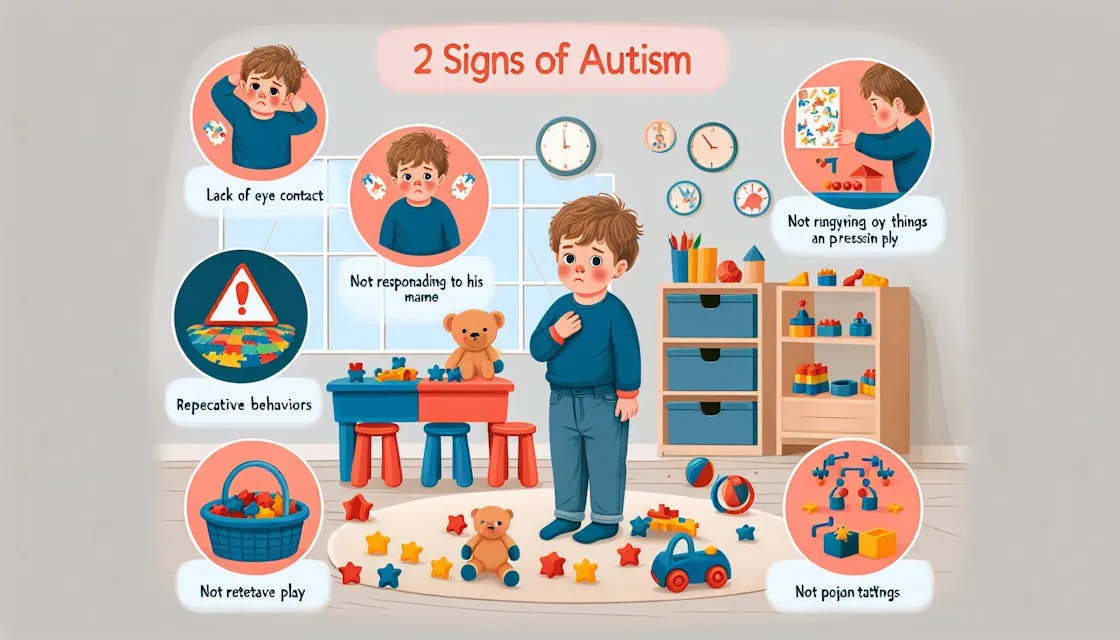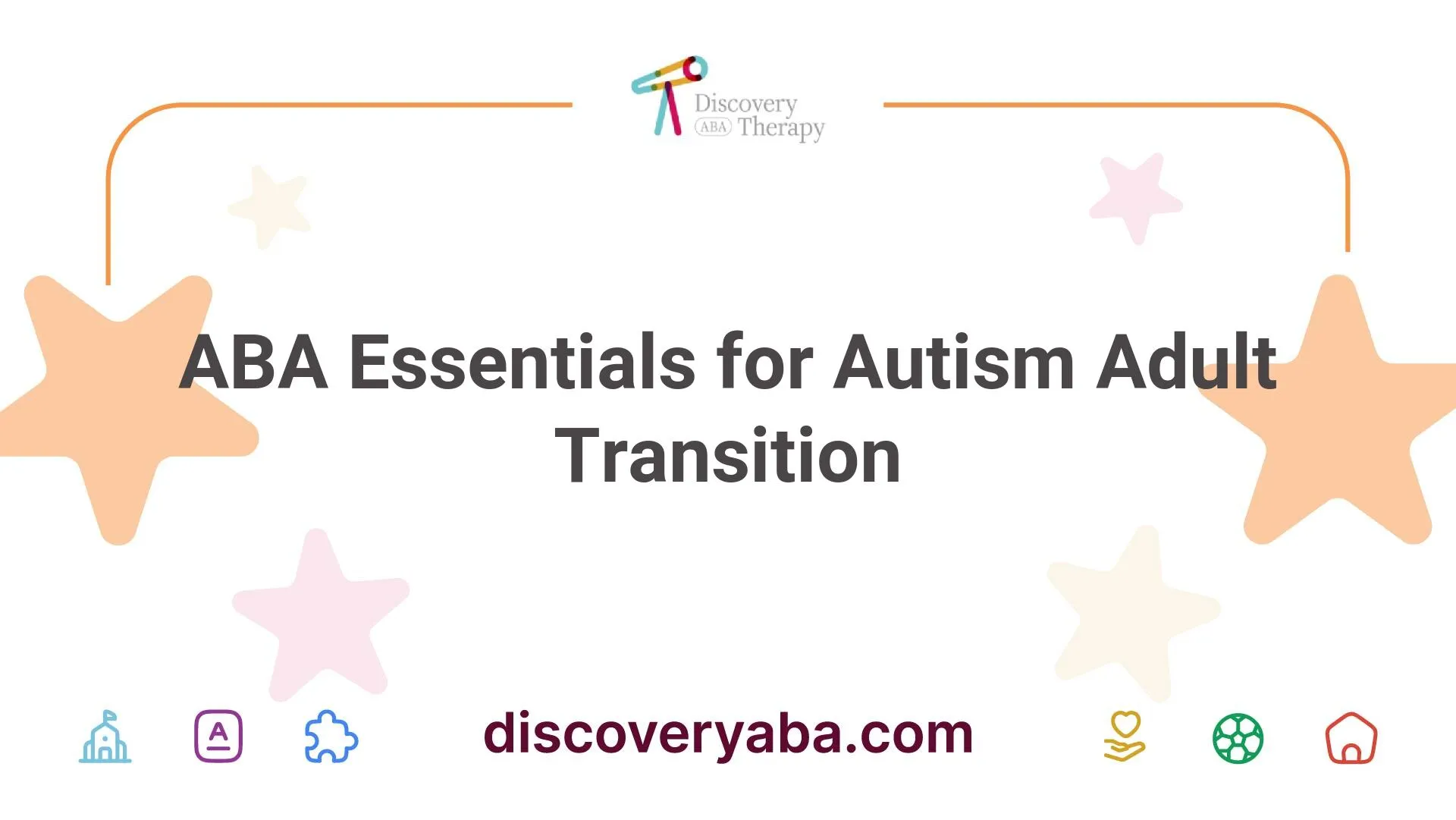How to use chaining to teach multi-step tasks
Mastering Multi-Step Skills with Chaining Methods

Unveiling the Power of Chaining in Teaching Complex Tasks
Chaining is a foundational teaching strategy rooted in applied behavior analysis (ABA) that effectively breaks down complex, multi-step tasks into smaller, manageable steps. This technique is especially beneficial for learners with autism and other learning challenges, as it promotes independence, reduces frustration, and ensures systematic skill acquisition. Understanding how to implement chaining techniques—such as forward, backward, and total task chaining—can significantly enhance educational and behavioral outcomes. This article explores the core concepts, procedures, practical applications, and guidelines for effective chaining use in various teaching environments.
Understanding Chaining as a Teaching Strategy
What is chaining as a teaching strategy for multi-step tasks?
Chaining is a teaching method used in applied behavior analysis (ABA) that involves breaking down complex tasks into smaller, manageable steps. Each step is taught individually, then linked together to form the complete skill or task. This approach makes learning easier and less frustrating, especially for individuals with autism or learning difficulties.
There are different ways to implement chaining. In forward chaining, the instructor teaches the first step first and then adds subsequent steps as the learner masters each one. Backward chaining, on the other hand, begins with teaching the last step of the task, so the learner experiences success and gets reinforced at the end of the process.
Total task presentation involves teaching all steps at once. The learner attempts the entire task with prompts, and the instructor gradually reduces assistance as independence increases.
Chaining is especially effective for teaching daily routines like brushing teeth, getting dressed, or making a bed. It helps build skills step-by-step, boosting confidence and independence for learners. Throughout each method, data collection is essential to track progress and adjust teaching strategies as needed.
Methods and Procedures for Chaining Techniques

How are task analysis and chaining methods used to teach complex tasks?
Creating a task analysis is the first step in applying chaining techniques. It involves breaking down a multi-step task, like brushing teeth or making a bed, into smaller, manageable steps. These steps are then clearly defined and organized sequentially. The importance of a detailed task analysis lies in helping both educators and learners easily understand what needs to be learned, ensuring consistency in teaching and reducing confusion.
Once the task analysis is established, instructional methods such as forward and backward chaining are employed to teach the skill.
What are step-by-step procedures for forward and backward chaining?
Forward Chaining begins by teaching the first step of the task. The learner is prompted to perform this step independently, and once mastered, the next step is introduced. Teaching continues in this natural sequence until the entire task is learned. During this process, consistent prompts and reinforcement after each successful step motivate progress. This method is especially effective when the initial steps are easier for the learner, providing a foundation for learning subsequent steps.
Backward Chaining, on the other hand, starts with the last step of the task. The instructor completes all previous steps for the learner, who then practices the final step independently. Once the learner masters the last step, the second-to-last step is added, and so on, working backwards. This approach allows the learner to experience near-complete success early, which can boost confidence and motivation.
Total Task Chaining involves teaching all steps at once. The learner attempts the entire sequence with prompts, gradually fading prompts as independence grows. This method is suitable when learners can handle multiple steps simultaneously and benefits from practicing the full routine with support.
What is the role of prompts and reinforcement in chaining?
In chaining procedures, prompts are essential to guide learners through each step, especially when they are first acquiring the skill. Prompts can be physical, verbal, visual, or gestural, depending on the learner’s needs. As the learner becomes more competent, prompts are systematically faded to promote independence.
Reinforcement plays a critical role at every stage. Positive reinforcement, such as praise or tangible rewards, is provided after successful completion of each step or the entire task, depending on the method used. Reinforcement encourages repetition and mastery, helping the learner associate the behavior with positive outcomes. Consistent use of prompts and reinforcement ensures that the learner gradually transitions from guided to independent performance, reinforcing their confidence and competence in completing complex tasks.
Teaching Complex Skills Through Chaining
 Chaining is a teaching strategy often used to help individuals learn complex, multi-step tasks, such as brushing teeth, getting dressed, or making a bed. This method is rooted in applied behavior analysis (ABA) and involves breaking down a large task into smaller, more manageable steps through a process called task analysis. Each step is taught separately and then linked together to form a complete sequence.
Chaining is a teaching strategy often used to help individuals learn complex, multi-step tasks, such as brushing teeth, getting dressed, or making a bed. This method is rooted in applied behavior analysis (ABA) and involves breaking down a large task into smaller, more manageable steps through a process called task analysis. Each step is taught separately and then linked together to form a complete sequence.
There are two main techniques for chaining: forward chaining and backward chaining. Forward chaining starts with teaching the first step in the sequence and gradually adding subsequent steps as the learner masters each one. This method is particularly useful when the initial steps are easier for the learner or when understanding the logical order of tasks is helpful.
Backward chaining, on the other hand, begins with the last step of the task. The learner practices this final step first, gaining confidence from completing the entire sequence successfully. Once they master the last step, the process moves backward to include earlier steps. This approach often provides immediate reinforcement, as learners see tangible results sooner.
Total task chaining offers another approach, where the learner attempts the entire task at once, with prompts and support provided as needed. This can be effective for structured routines where the complete process is essential, and the learner benefits from experiencing the whole sequence.
The benefits of chaining are substantial. It reduces frustration by breaking down complex tasks into smaller parts, making learning more approachable. It also promotes independence, as learners gradually take more control over completing routines. Importantly, chaining helps build confidence as individuals see their progress firsthand through mastery of each step.
Implementation involves several steps: creating a detailed task analysis, observing the task being performed, teaching each step with reinforcement, and adjusting strategies based on progress data. Whether using forward, backward, or total task chaining, consistent practice and positive reinforcement are crucial.
Overall, chaining techniques are valuable across settings—from homes to schools—enabling learners to accomplish daily routines and more complex activities with increased independence and self-sufficiency.
Practical Examples and Applications of Chaining
 Chaining is widely used to teach everyday skills that involve multiple steps. This method helps break down complex tasks into smaller, more manageable parts, making it easier for learners to master them independently.
Chaining is widely used to teach everyday skills that involve multiple steps. This method helps break down complex tasks into smaller, more manageable parts, making it easier for learners to master them independently.
For example, daily routines like brushing teeth, tying shoelaces, making a bed, or bathing can all be taught through chaining. Each task is divided into specific steps, such as picking up the toothbrush, applying toothpaste, brushing, rinsing, and putting away the toothbrush. Once the individual learns each step, they connect these actions into a complete sequence.
In teaching children with autism, chaining proves especially effective. It reduces frustration and helps increase understanding by teaching skills one step at a time. This approach is grounded in applied behavior analysis (ABA), which emphasizes systematic teaching methods.
Examples include:
| Skill | Step Breakdown | Chaining Technique | Additional Notes |
|---|---|---|---|
| Toothbrushing | Pick up toothbrush, open toothpaste, apply toothpaste, brush, rinse, put away | Forward chaining, total task | Beginning with the first step, the learner masters each step sequentially |
| Tying shoes | Put on laces, cross laces, make a loop, pull tight | Backward chaining, total task | Starting with the final step (making the knot), then working backwards |
| Making a bed | Spread sheets, place pillows, straighten blankets | Forward chaining | Teaches the routine in natural order |
Use in Behavior Management and Skill Development
Chaining techniques are applied not only in daily living but also in academic and social skill teaching. For instance, teaching a child to complete tasks like pouring cereal or following classroom routines can be structured through chaining.
The choice of chaining method depends on the individual’s needs and the task’s complexity. Forward chaining helps when a learner can perform initial steps, while backward chaining is useful when the last step is easier or more motivating. Total task teaching allows the learner to experience the whole activity at once with support, which can be beneficial for certain skills.
By systematically teaching each step and reinforcing success, chaining supports independence and builds confidence in learners, especially those with autism. Visual aids like charts or pictures often accompany the process, aiding comprehension and retention. Overall, chaining makes learning multi-step tasks more approachable and successful.
Total Task Chaining and Its Differences

What is total task chaining and how does it differ from other methods?
Total task chaining is a teaching approach used in applied behavior analysis (ABA) where the learner practices all steps of a complex task during each session. Unlike other methods that break down the task into smaller parts and teach them separately, this technique involves guiding the individual through the entire sequence repeatedly. Assistance or prompts are provided as needed, but the goal is for the learner to complete the whole task independently over time.
In this method, the learner begins to perform the entire task from start to finish with support, which helps build a clear understanding of the entire process. It is especially suitable for skills that are functional and multi-step, such as tying shoelaces, making a sandwich, or completing a morning routine.
Compared to forward chaining, which starts with teaching the first step and gradually adds subsequent steps, and backward chaining, which begins with the last step, total task chaining tackles the entire skill at once. This approach encourages practicing the full sequence immediately, promoting better generalization and real-life application.
In summary, total task chaining involves practicing the whole task at each session, fostering independence across all steps from the outset. It is particularly effective for teaching complex, multi-step behaviors that benefit from repeated practice of the full routine.
Guidelines for Effective Use of Chaining Strategies

Preparation: task analysis and individualization
Before starting a chaining intervention, it is essential to perform a detailed task analysis. This process involves breaking down a complex skill into smaller, sequential steps that are understandable and teachable for the learner. The task analysis should be customized to fit the individual's skill level, prior experiences, and personal needs. For example, steps for brushing teeth might include picking up the toothbrush, applying toothpaste, brushing, rinsing, and putting away the toothbrush.
Choosing the appropriate chaining method
Selecting the right chaining technique depends on the learner and the task. Forward chaining is ideal when a child can perform initial steps but needs help with later ones. Backward chaining works well if the student can finish the task but struggles with earlier stages. Total task chaining is suitable for structured routines where the child benefits from experiencing the entire task with prompts. The goal is to match the method to the individual’s learning style and the complexity of the task.
Prompting strategies and reinforcement
Prompting involves guiding the learner through each step, gradually fading assistance to foster independence. Reinforcement, whether praise, tokens, or other rewards, should be provided immediately after each successful step. Consistent reinforcement helps strengthen desired behaviors and motivates continued effort. Visual supports like pictures or schedules can supplement prompts, making steps clearer and easier to follow.
Monitoring and data collection
Gathering accurate data during instruction is crucial for evaluating progress. Using methods like single-opportunity or multiple-opportunity data collection allows educators to track mastery of each step and the overall task. Regular assessment helps identify when the learner has achieved independent performance or when adjustments are necessary. Data-driven decisions ensure that the chaining process remains effective.
Adjustments and fading prompts
As the learner becomes more proficient, prompts should be systematically faded to promote independence. Fading can involve reducing the level of assistance or gradually increasing the difficulty of steps. If a learner struggles, additional prompts or repetition may be necessary before advancing. Adaptability in teaching strategies ensures continuous skill development and helps generalize skills across contexts.
Harnessing the Power of Chaining for Independent Living
Employing chaining techniques in teaching multi-step tasks offers a structured, effective pathway towards developing independence and functional skills, particularly in children with autism and other developmental challenges. By understanding and applying different chaining methods—forward, backward, and total task—educators and caregivers can tailor instruction to individual needs, ensuring mastery and generalization of skills. Utilizing comprehensive task analysis, consistent reinforcement, and progress monitoring, the chaining approach transforms complex routines into achievable, confidence-building learning experiences. Embracing these strategies can profoundly impact daily living, academic, and social skills, fostering greater independence and quality of life.
References
- [PDF] Task Analysis & Chaining Tip Sheet
- Chaining - KSDE TASN
- Chaining and Task Analysis [Video] - Relias
- ABA and Chaining: Breaking Down Complex Tasks Into Smaller Steps
- Applied Behavior Analysis: The Role of Task Analysis and Chaining
- Master Chaining Techniques in ABA: Essential Skills for RBTs
- Types of Chaining in ABA: Backward, Forward, & Total Task Chains
- How to Use Chaining to Break Down Complex Tasks for Autistic ...
Find More Articles
Contact us
North Carolina, Tennessee, Nevada, New Jersey, Utah, Virginia
New Hampshire, Maine
Massachusetts, Indiana, Arizona, Georgia
.avif)































%2520(1).jpeg)

.jpeg)












.jpeg)



















.jpeg)


.jpeg)



.jpeg)


























